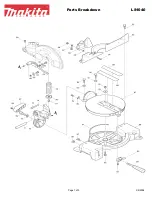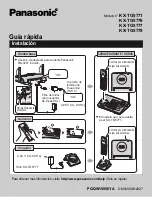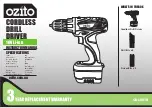
12
Cutting
WARNING:
The jig saw should not be operated with the shoe removed or serious
personal injury may result.
POCKET CUTTING (FIG. 13)
FIG. 13
A pocket cut is an easy method of making an inside cut. The saw can be inserted
directly into a panel or board without first drilling a lead or pilot hole. In pocket cutting,
measure the surface to be cut and mark clearly with a pencil. Next tip the saw forward
until the front end of the shoe sits firmly on the work surface and the blade clears the
work through its full stroke. Switch the tool on and allow it to attain maximum speed.
Grip the saw firmly and lower the back edge of tool slowly until the blade reaches its
complete depth. Hold the shoe flat against the wood and begin cutting. Do not remove
blade from cut while it is still moving. Blade must come to a complete stop.
FLUSH CUTTING (FIG. 14)
A flush cut is necessary when finishing off cuts up
to a wall or an obstacle, such as back-splash. One
of the easiest ways to accomplish the flush cut is to
use a flush cutting blade (DT2074). The flush cutting
blade provides the reach necessary to cut right up to
the front edge of the jig saw shoe. Remove the anti-
splinter insert and return the shoe to the 0° positive
stop position before installing and using the flush
cutting blade. For the best cut quality the flush cutting
blade should be used in the 0 or 1 orbital position.
The flush cutting blade should not be used to start the
cut because the flush cutting blade prevents the shoe
from being supported by the work surface. Use wood
cutting practices explained below.
WOOD CUTTING
Support the workpiece adequately at all times. Use the higher speed setting for cutting
wood. Do not attempt to turn the tool on when blade is against material to be cut. This
could stall the motor. Place the front of shoe on the material to be cut and hold the jig
saw shoe firmly against the wood while cutting. Don’t force the tool; let the blade cut
at its own speed. When the cut is complete, turn the jig saw off. Let blade come to a
complete stop and then lay the saw aside before loosening the work.
METAL CUTTING
In cutting thin gauge sheet metals, it is best to clamp wood to the bottom of sheet
metal; this will insure a clean cut without the risk of vibration or tearing of metal.
Always remember to use a finer blade for ferrous metals (for those that have a high
iron content); and use a coarser blade for non-ferrous metals (those that do not have
an iron content). Use a high speed setting for cutting soft metals (aluminum, copper,
brass, mild steel, galvanized. pipe, conduit sheet metal, etc.). Use lower speed to cut
plastics, tile, laminate, hard metals, and cast iron.
MAINTENANCE
WARNING: To reduce the risk of serious personal injury, depress the trigger
lock button and disconnect battery pack before making any adjustments or
removing/installing attachments or accessories.
An accidental start-up can cause
injury.
Lubrication
Your power tool requires no additional lubrication.
Cleaning
WARNING:
Blow dirt and dust out of all air vents with clean, dry air at least once
a week. To minimize the risk of eye injury, always wear AS/NZS51337 approved eye
protection when performing this.
WARNING:
Never use solvents or other harsh chemicals for cleaning the
non-metallic parts of the tool. These chemicals may weaken the plastic materials
used in these parts. Use a cloth dampened only with water and mild soap. Never let
any liquid get inside the tool; never immerse any part of the tool into a liquid.
FIG. 14
Содержание XR Li-ION DCS331-XE
Страница 1: ...DCS331 XE DCS332 XE CORDLESS JIG SAW INSTRUCTION MANUAL ...
Страница 2: ......


































